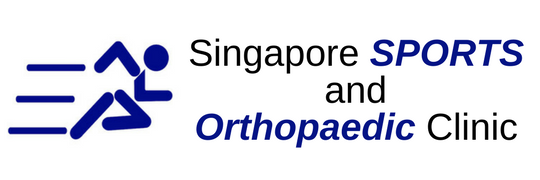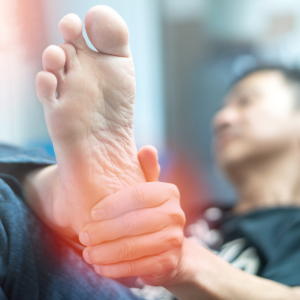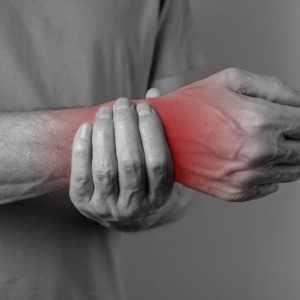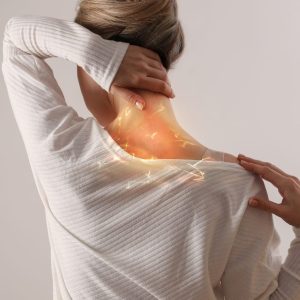All About Sciatica. What To Know and How To Manage
Sciatica, a common condition affecting millions worldwide, arises from the sciatic nerve’s irritation, inflammation, or compression, which runs from the lower back to the legs. While often not severe, sciatica can lead to discomfort and hinder daily activities.
What is Sciatica?
Sciatica originates from damage to the sciatic nerve, the longest and thickest nerve in the body, responsible for sending signals from the spinal cord to the legs. It can result in pain, tingling, and numbness in the lower back, buttocks, and legs, with severe cases exhibiting more pronounced symptoms. The nerve’s complex structure includes a bundle of nerves branching from the spinal cord’s five nerve roots, extending through the hip and buttock before splitting into multiple nerves further down the leg.

Types of Sciatica
Sciatica can be categorized into two types:
True sciatica: Sciatica is characterized by pain that follows the trajectory of the sciatic nerve, extending from the lower back, through the hips and buttocks, and down the length of each leg. This condition typically arises when pressure is exerted on a specific segment of the nerve due to factors such as a herniated disk or excessive bone growth.
Sciatica-like conditions: The sensations accompanying sciatica can range from a subtle tingling to a dull ache or even a burning discomfort. In certain instances, the pain can be so intense that it immobilizes an individual. Generally, the pain is concentrated on one side of the body. It’s not uncommon for individuals to experience sharp pain in a specific area of the leg or hip alongside areas of numbness in other regions.
The effects of both types are similar, but the treatment approach may differ based on the underlying cause.
Symptoms and Causes of Sciatica
Symptoms
Sciatica often presents with various symptoms, including:
Pain: Described as burning or electric shock-like sensations radiating down the leg.
Tingling and Numbness: Comparable to the feeling of a leg falling asleep.
Muscle Weakness: Difficulty in muscle control signals reaching their intended destination.
Urinary and Fecal Incontinence: Severe cases may disrupt bladder and bowel control signals.
Causes
Multiple conditions can lead to sciatica, including:
- Herniated disks
- Degenerative disk disease
- Spinal stenosis
- Foraminal stenosis
- Spondylolisthesis
- Osteoarthritis
- Injuries
- Pregnancy
- Tumours or growths
- Conus medullas and Cauda equina syndromes
Risk Factors for Sciatica
Various factors contribute to the development of sciatica, such as:
- Previous injuries
- Age-related wear-and-tear
- Excess weight or obesity
- Insufficient core strength
- Occupation and physical activity levels
- Poor posture and lifting techniques
- Diabetes and physical inactivity
- Tobacco use
Diagnosis and Tests
Diagnosing sciatica involves medical history review, physical examinations, walking assessment, and specific tests such as the straight leg raise test. Further diagnostic tools include spine X-rays, CT scans, MRI scans, nerve conduction studies, electromyography, and myelograms.
Treating Sciatica
Self-Treatment: For milder cases, self-treatment can be effective, involving ice and heat therapy, over-the-counter pain relief, stretching, and low-impact activities.
Conservative Treatments: If symptoms persist, healthcare providers may recommend prescription medications, physical therapy, spinal injections, or alternative therapies like chiropractic care, yoga, and acupuncture.
Surgical Options: Surgery might be considered for severe cases or when other treatments fail. Procedures like diskectomy and laminectomy can alleviate pressure on affected nerves.
Prevention and Living with Sciatica
Preventive Measures: While some causes of sciatica are unavoidable, maintaining good posture, quitting tobacco use, managing weight, staying active, and preventing falls can reduce the risk of developing the condition.
Outlook and Prognosis: Most cases of sciatica resolve within weeks or months with appropriate treatment. Severe cases may require more extended recovery periods or surgical intervention.
When to Seek Medical Attention
Consulting a healthcare provider is recommended
for moderate to severe pain, tingling, numbness, or muscle weakness. Emergency medical attention is necessary for severe muscle weakness, bladder or bowel control loss, and sudden, severe pain.
Understanding sciatica’s causes, symptoms, and treatment options empowers individuals to effectively manage and alleviate their discomfort. By adopting preventive measures, seeking timely medical attention, and adhering to recommended treatments, one can navigate the challenges of sciatica and regain their quality of life.










